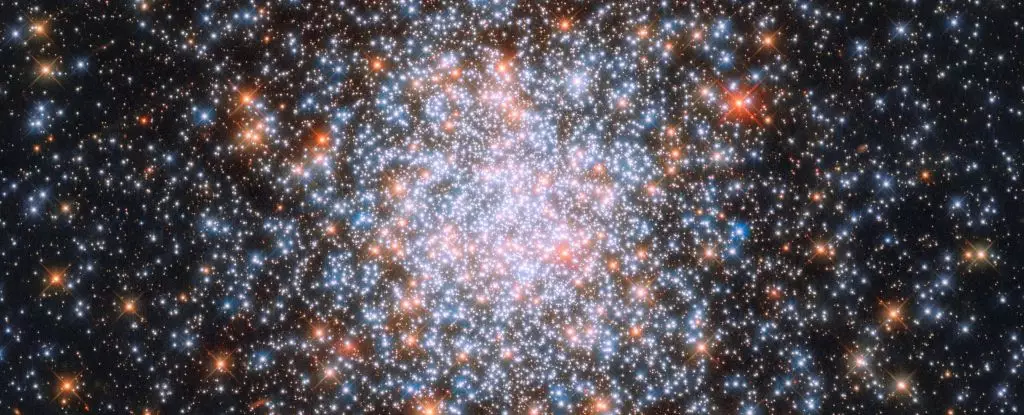Peering back to the infancy of the cosmos is one of the most ambitious challenges in modern astronomy. Approximately 100 million years after the Big Bang, the Universe transitioned from a dark, featureless expanse to one teeming with the first stars. Yet, these primordial stars have remained stubbornly elusive, leaving their direct fingerprints lost in the mists of time. Instead, astronomers turn to subtle cosmic clues encoded in faint radio emissions — specifically, the cosmological 21-centimeter hydrogen line — to decode this crucial chapter in the cosmic story.
This feeble radio signal stems from neutral hydrogen atoms, which were the main constituents of the early Universe’s interstellar medium before stars carved their luminous niches. These radio photons offer a unique window into the conditions of space before and during the epoch of the first stars’ formation, providing indirect yet tantalizing evidence of their properties. While we have yet to detect these stars directly, the coming generation of radio telescopes promises an unprecedented opportunity to glimpse their spectral imprints.
Why the First Stars Remain Hidden
The initial population of stars is thought to be wildly different from the comparatively modest stars populating our modern cosmos. Many theories propose that these first stars, often termed Population III stars, were gargantuan — perhaps hundreds or thousands of times the mass of our Sun. These titanic stars lived short, intense lives, burning through their nuclear fuel rapidly and ending in spectacular supernovae or collapsing into neutron stars and black holes. Their fleeting existence, coupled with the vast stretches of cosmic time, makes direct observation nearly impossible.
The veil is further thickened by the lack of metals in the primordial gas. Without heavy elements, the cooling mechanisms that shape star formation today were absent, potentially influencing the masses and lifespans of those earliest stars. This elemental scarcity and the extreme distances mean that astronomers must rely heavily on indirect evidence—like the subtle fluctuations in the 21-centimeter hydrogen signal—to unpack the nature of these ancient celestial monsters.
Revealing the Signature of Ancient Stars in Radio Waves
Central to the effort is the 21-centimeter line itself, a spectral fingerprint that arises when electrons in neutral hydrogen atoms flip their spin orientation relative to the proton. In the cold early Universe, these shifts produced incredibly faint radio signals that now span across the cosmos. The presence and characteristics of the first stars influenced these signals by altering the ionization state and the temperature of the hydrogen gas.
What’s groundbreaking about recent research is the explicit modeling of how star mass translates into a distinctive imprint on this hydrogen signal. The work led by Thomas Gessey-Jones and his team incorporates the effects of ultraviolet (UV) light and, importantly, X-ray radiation from the remnants of massive stars—black holes and neutron stars formed from their explosive deaths. Previous studies often overlooked the X-ray heating and ionization, which can significantly reshape the 21-centimeter signal, making this integrated approach a leap forward.
Emergence of X-rays: A Crucial Missing Piece
When massive stars end their lives, their collapsed cores can become prodigious X-ray sources, especially if they exist in binary systems. These X-rays have far-reaching effects, heating the surrounding hydrogen and altering the spin-flip transition rates. Including this dynamic in simulations provides a more accurate and nuanced prediction of what telescopes should search for.
This nuanced modeling means that future instruments like the Square Kilometer Array (SKA) and the Radio Experiment for the Analysis of Cosmic Hydrogen (REACH) will not only detect the 21-centimeter signals but can interpret these signals to infer the masses and lifecycle properties of the earliest stars. These tools will open a new epoch in observational cosmology, where the Universe’s infancy unfolds through radio wavelengths with remarkably detailed precision.
A New Dawn in Cosmic Understanding
This advancing frontier is far more than a technical feat; it’s a moral victory for humanity’s intrinsic curiosity. By identifying the characteristics of the Universe’s first stars, scientists can illuminate how structures evolved from simplicity into the complexity we observe today. This research does not just update cosmic models—it fundamentally enriches our narrative of how light conquered darkness for the first time, setting the stage for all subsequent galactic and planetary systems.
While the observations are still forthcoming, the frameworks now in place provide a robust roadmap to disentangle the Universe’s earliest secrets. The dawn of observational cosmology guided by the 21-centimeter signal is poised to rewrite our understanding of star formation in the pristine Universe, marking a vital stride in humanity’s quest to grasp its cosmic origins.

